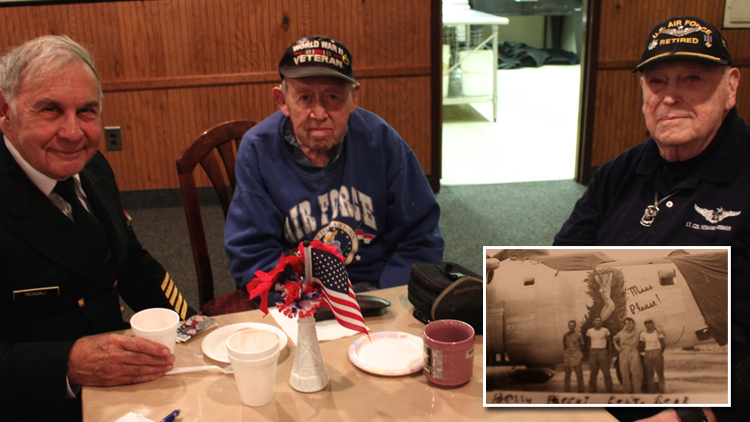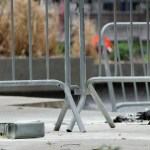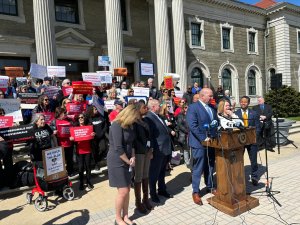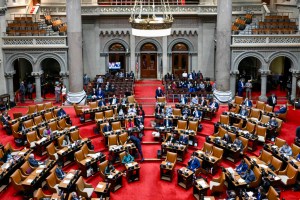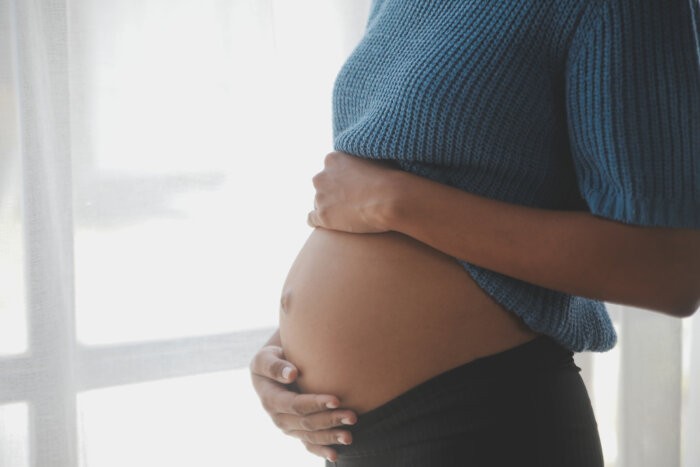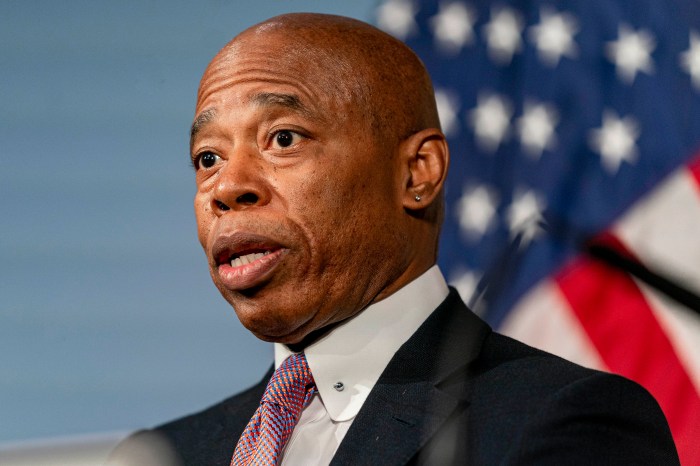Banter between a group of friends over pizza and beer one Saturday night 70 years ago led Howard Liebman, of Hicksville, to enlist in the U.S. Army during World War II that coming Monday.
The 90-year-old retired lieutenant colonel was 19 years old when he joined the fight, starting out as an airborne radio operator. Shortly after, while flying for the first time in Boca Raton, Fla., he realized it was his calling.
“The flying bug bit me,” Liebman recalled. “This is what I had to do.”
Liebman and a group of fellow WWII vets—as well as veterans of other wars—gathered to recount their war experiences at the Veterans of Foreign Wars post in Hicksville on Tuesday following a Veterans Day parade. Out of 16 million Americans who served in WWII, only about one million are left. Many of those live on Long Island, which is home to one of the largest populations of veterans in the nation.
Liebman’s friend, 91-year-old Sheldon “Shelley” Okin of Levittown, a fellow WW II veteran, noted the importance of remembering those who served.
“I lost a lot of good friends of mine,” said Okin. “It’s not that I honor them because I could’ve been a casualty myself…[It’s] for the simple reason we fought to honor democracy [and] freedom of speech, so it’s important we continue to honor a democracy that represents veterans.”
Liebman said that he flew more than 2,500 hours, completed 35 missions, received air medals four times, eight battle stars and two foreign declarations from the Chinese government and Philippines Liberation, said Liebman.
Dropping flyers in Japan warning civilians of the atomic bomb was his final mission. Afterward, he flew to Hawaii and back home to New York, he said.
“I was in New York when Japan surrendered,” Liebman recalled. “I’m walking down Broadway and strange women were kissing me and men were dragging me into bars!”
In 1945, as a radar navigator bombardier flying a B-29 Superfortress, Liebman flew against targets in Japan, Singapore, Manchuria, Sumatra and China.
“It was scary, of course, and missions were long. A lot were 20 hours [and] you don’t sleep, believe me,” Liebman said. “They gave you Benzedrine, today it’s Dexedrine, so when you are in a combat area you are alert because you can’t afford to be asleep.”
It didn’t always go smoothly. On one particular mission, while flying 9,000 feet over Burma, Liebman’s plane crashed after a mechanical failure, killing two crew members. Australia soldiers and Indian Sikhs rescued Liebman and the rest of his squad, carrying them back to the Americans, he said.
“It was a good day for a bailout. It was high noon [and] there wasn’t a cloud in the sky,” said Liebman. “But you don’t plan for emergencies so we lost two of our men.”
Being in combat during World War II took a psychological toll on soldiers. But, for many veterans, Post Traumatic Stress Disorder (PTSD) went undiagnosed for years, said Liebman.
“In 1946, I first reported it, and that’s when they told me my nervous stomach [will go away] and [my] hearing will come back,” said Liebman. “I didn’t fully [recover]. Still to this day, I have hearing aids and bad problems in my stomach.”
Although he is being treated for PTSD, Liebman continues to struggle. But it could have been worse. According to Liebman, only 30 percent of his crew returned home.
“When you get home after combat, you are uncomfortable because you’re not used to civilian life anymore, and you do dumb things like when an airplane flies over, you duck under because you’re used to being bombed,” said Liebman. “It’s very traumatic because you lost your closest friends, and when you come back you are almost afraid of making friends.”
By retelling their stories, Liebman, Okin and their fellow veterans do their part to honor the memories of those who served. And for those still deployed overseas in current conflicts, yellow ribbons remain tied to trees in support of the troops.



